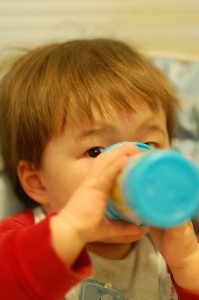 At a scientific hearing held Tuesday, the FDA maintained the use of bisphenol A (BPA) in hard plastics is safe, but advised on ways to limit exposure.
At a scientific hearing held Tuesday, the FDA maintained the use of bisphenol A (BPA) in hard plastics is safe, but advised on ways to limit exposure.
If it is safe, why limit exposure?
As reported by the Associated Press,
“Right now, our tentative conclusion is that it’s safe, so we’re not recommending any change in habits,” said Laura Tarantino, head of the FDA’s office of food additive safety. But she acknowledged, “there are a number of things people can do to lower their exposure.”
Mainly, she said, avoid any recyclable plastic stamped with the number 7.
“The vast majority of evidence suggests that even everyday levels of exposure to BPA can be associated with a number of different health issues,” Sarah Janssen, a science fellow at NRDC who attended the hearing, wrote on her blog.
Everyday exposure is especially dangerous for babies, who, according to Sonya Lunder of the Environmental Working Group, are exposed to more than 12 times as much BPA as adults.
So what gives? Independent studies and scientists have been sounding the alarm bell on the levels of BPA found in human blood and tissue. BPA has been linked to heart disease and diabetes and has been found to alter the brain and prostate of fetuses and children. The substance is found in hard plastic items, such as baby bottles and sippy cups and is found in the lining of some canned foods – including liquid infant formula and powdered formula.
Of special concern is that the FDA based its findings on three studies funded by the American Chemistry Council – and rejected research funded by the National Institutes of Health.
Until the FDA examines the findings of ongoing studies, consumers may limit their exposure by avoiding plastics labeled by the numeral 7 (usually found at the bottom of cups and bowls) and seek out BPA-free products, canned formula and baby products.
It’s so easy to be lulled into forgetting that it’s better to be safe than sorry, isn’t it? I have friends who accuse me of believing that natural is always better. I’m not so bold — but I do see that older products and methods seem to have withstood the test of time, while newer ones often mask problems that come to light after 10 or 20 (or even more!) years.
Rather than go ’round and ’round over what type of plastic is safest and best, why not fill up a stylish Sigg or a Kleen Kanteen bottle and get on with your day?
I agree. Being cautious is always a good idea, and given the evidence presented by the National Institutes of Health — I don’t think we’re being too cautious to avoid plastics with BPA.